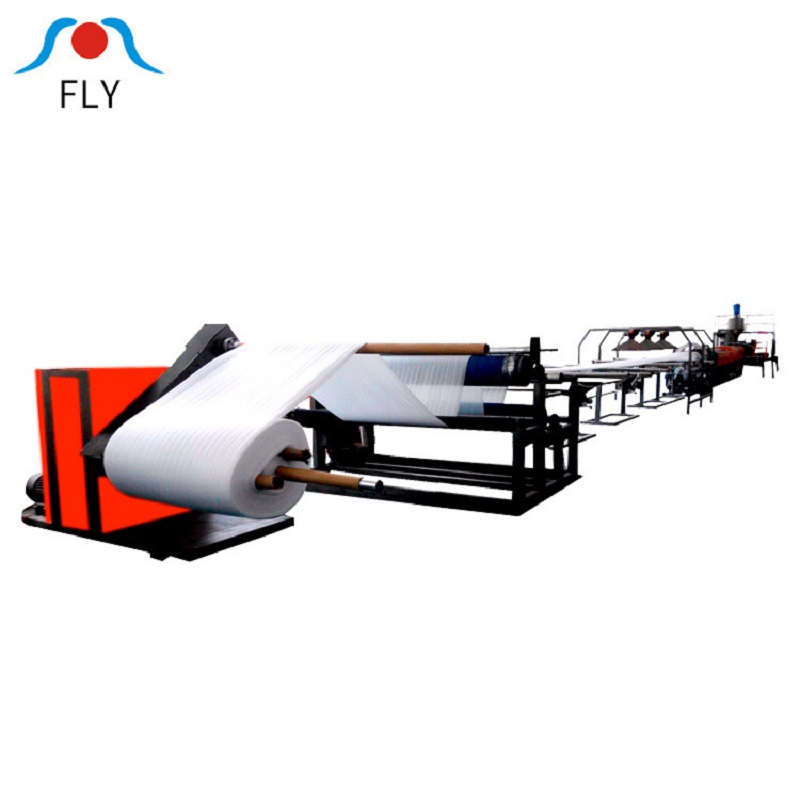As a manufacturer of EPE foam machines, we understand the importance of efficient production. Here are 5 core tips to improve EPE foaming efficiency, helping you reduce costs and enhance product quality.

Use a high-speed mixer to blend PE pellets and blowing agents (like butane) for 8-10 minutes at 1200-1500 RPM, ensuring even coating (95%+ dispersion). Dry wet materials first (moisture ≤0.1%) to avoid bubble cracks.
Keep temperature within ±1℃ using a smart system, with three heating stages: 80-100℃ (feeding), 120-140℃ (compression), 160-180℃ (metering). This fully decomposes butane (98%), creating dense, uniform bubbles (300-500 cells/cm³)—60% less residue than old machines.
• Add 3%-5% blowing agent (by weight)—too much causes broken bubbles.
• Cooling + traction sync: Use air+water cooling at the die (8-12m/s air, 15-20℃ water), keep traction speed within ±1% accuracy. For 3mm sheets, 98% yield with thickness error tinier than a hair (±0.05mm).
Long-term operation causes component wear, a "hidden killer" of reduced efficiency. Check the screw and die for wear every week, clean the filter monthly, and replace the hydraulic oil quarterly. Pay attention to unusual noises during operation—sudden sounds or vibrations may indicate worn bearings or loose screws. Prompt repairs prevent larger failures. Factories with regular maintenance cut downtime by 40% and extend equipment lifespan by 30%.
Smart task planning maximizes equipment use. Group orders with the same density and thickness to minimize parameter adjustments, and alternate large and small orders to reduce mold changes. For example, produce 10 tons of 24kg/m³ EPE first, then switch to 5 tons of the same density but different thickness. This cuts changeover time from 2 hours to 30 minutes. A packaging factory boosted equipment utilization from 65% to 85% and increased monthly output by 20% through scheduling optimization.
Boosting foaming efficiency is simple—focus on mixing, temperature, parameters, and smart tech. FLY Machinery has helped 300+ factories increase output by 20%-35% and cut energy costs by 15%-20%. Try these tips, check equipment regularly, and explore new tech (like supercritical CO₂ foaming) for smoother, cheaper production!